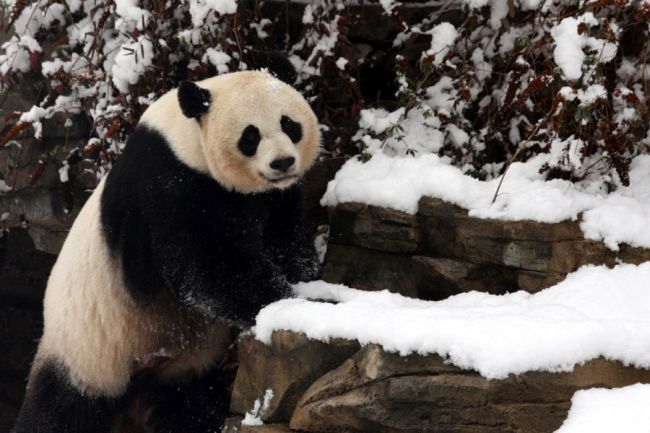
There may have been a collective squeal of glee for animal-lovers around the world, when The National Zoo announced the birth of twin pandas last week. Giant panda parents Tian Tian (male) and Mei Xiang (female) gave birth to the two male cubs, which had been under close supervision since their arrival on August 22nd 2015. Since having multiple offspring simultaneously typically causes strain on the female panda, the animal’s support team implemented the “rotating” method of care to ensure each panda cub would have sufficient time with the mother. Every few hours, one cub would spend time feeding with the mother, while the other would rest in a warm incubator. By proving each panda with supplemental nourishment (comprised of puppy food and infant formula), the creatures would be able to steadily grow stronger.
Unfortunately, while this tactic has proven successful in China and other United States zoos, there are instances where one cub is weaker, and does not succeed in surviving. At the National Zoo, Mei Xiang had been resisting the cub trade-off whenever they occurred, showing no preferential treatment to one cub over the other. But in spite of her devoted care and the support of the team, one of the male cubs started showing signs of respiratory strain, weight loss and lethargy. Suspecting an infection, the cub was administered with antibiotics, but no improvement was apparently effective.
As might be expected even in the wild, survival of the fittest claimed the life of the weaker panda twin, who died on August 26th around 2 pm. A recent report regarding the necropsy’s findings showed that the cub likely died from pneumonia, as a result of aspiration of food. Fortunately, several days after his brother’s death, the remaining panda cub is currently doing well and will likely have a more promising future.
The number of free-roaming giant pandas in China is dwindling, with potentially as few as 1,600 left. Due to the decreasing population of these beautiful creatures, zoos have strenuously sought to aid reproduction of captivated animals in an effort to help endangered species avoid extinction. While the success rate is varied, there is still hope for future attempts to cultivate the growth of wild animals grown in captivity. For example, the twin pandas born in 2013 at the Atlanta Zoo are both healthy and thriving. Though the loss of one panda twin at The National Zoo is a great discouragement and tragedy, the persistence of his brother reinforces the belief that breeding may be an effective way to continue the legacy of these majestic giants.

